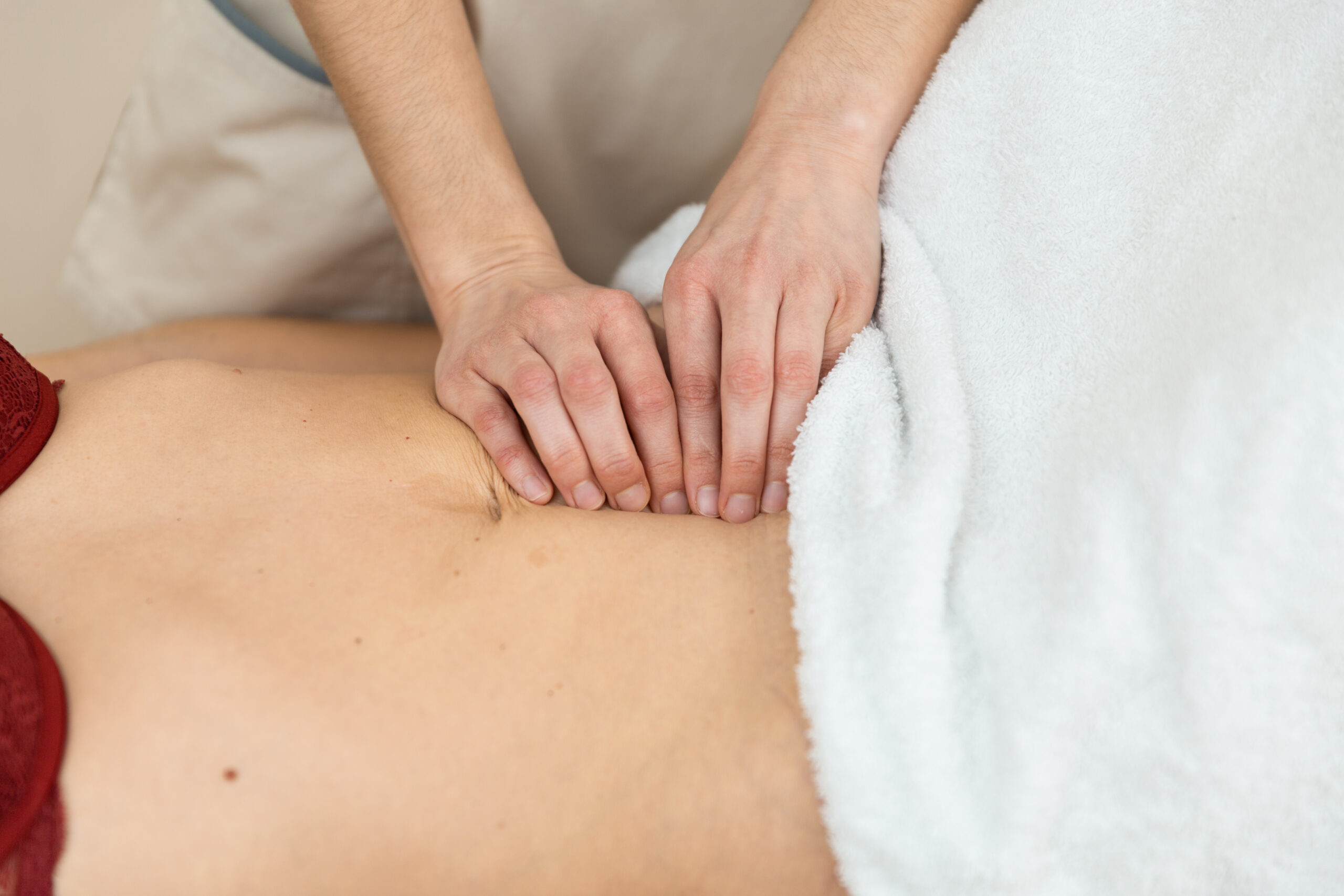What is Diastasis Recti:
Diastasis Recti Abdominis (DRA) is a separation of your abdominal muscles that often occurs during pregnancy and can remain after childbirth. After the baby is born it is normal for this to remain for some time, but if it is still present long after childbirth, it can contribute to low back pain, pelvic organ prolapse, and incontinence.
These may be signs you have a diastasis recti that needs to be addressed: You notice a bulge in the middle of your tummy when you go to get up out of a chair or out of bed, or the middle of your stomach feels softer and more squishy than normal.
A Diastasis Recti takes time to heal, but often can be improved with a guided exercise program and instruction on managing the pressure within your abdomen (i.e. how to breathe during various activities).
How to check for DRA:
Lay comfortably on your back with your knees bent and feet on the floor. Then lift just your head, and feel along the center of your abs from the bottom of your rib cage all the way down to your pubic bone. The space between your abdominals should be no wider than about 2 finger widths. Also, more importantly, it should feel firm, like a trampoline. If it feels soft and squishy, that means your deeper abdominal muscles are not working as well as they should. You can have diastasis in different places, but it mainly occurs above the belly button, below the belly button, or along the entire length of your abdominal muscles.
How to minimize DRA during pregnancy:
The stronger your deep abdominal muscles are, and the better functioning your core muscles are, the more you will be able to minimize the diastasis recti during pregnancy, and improve your outcome after childbirth. To strengthen your deep lower abdominal muscles, work on flattening your lower belly as you exhale, or drawing your hip bones in the front together as you exhale. You may do this in sitting, standing, or on your hands and knees.
What to do if I have a DRA:
Exercises that will help improve DRA or make DRA worse will vary from person to person, depending on how one is using their core muscles. You will want to avoid any exercises or movements that cause your abdomen to bulge at midline. Try to avoid holding your breath during activities such as picking up your baby. Instead, when going to pick up your baby, exhale and work on pulling your vagina up and flattening your lower belly. If you are having trouble engaging your deep lower abs, or your DRA doesn’t seem to be getting better, or you have other symptoms such as low back pain, urinary or fecal incontinence, or pelvic pressure; it would be helpful to make an appointment with a physical therapist who specializes in women’s health. Often just a couple of visits are needed to get you on track. Active Physical Therapy has 3 physical therapists who specialize in Women’s Health and look forward to helping you feel your best!

